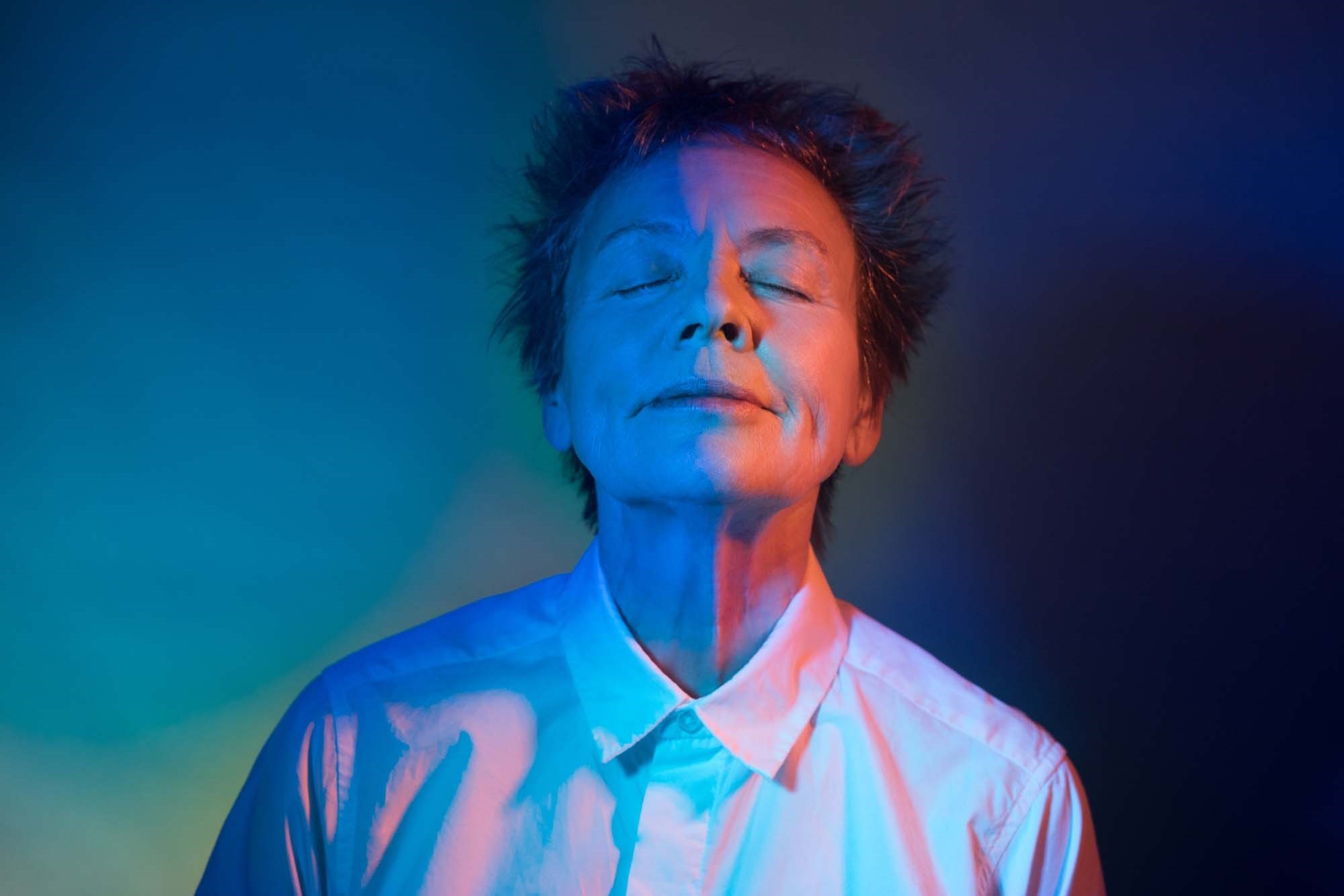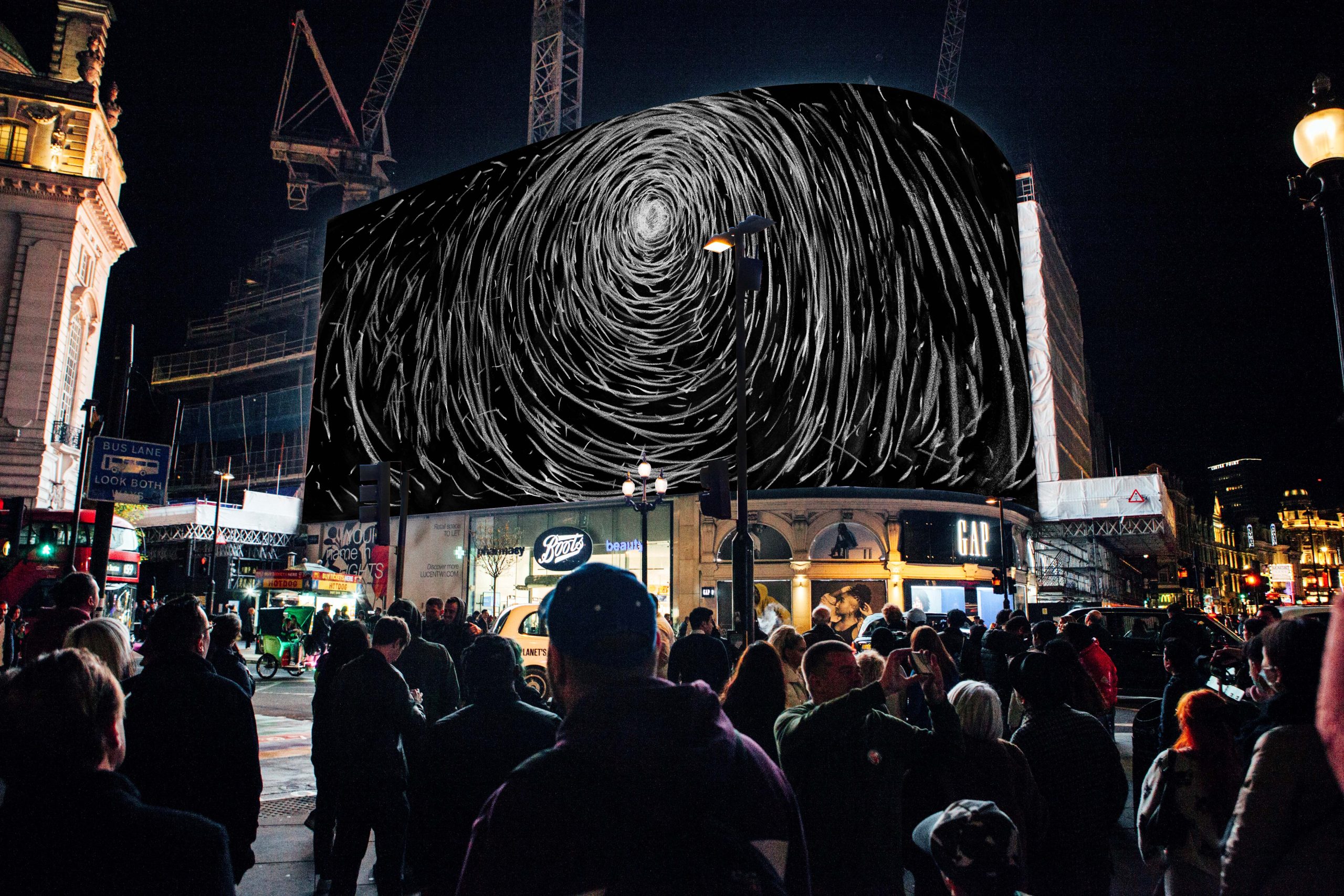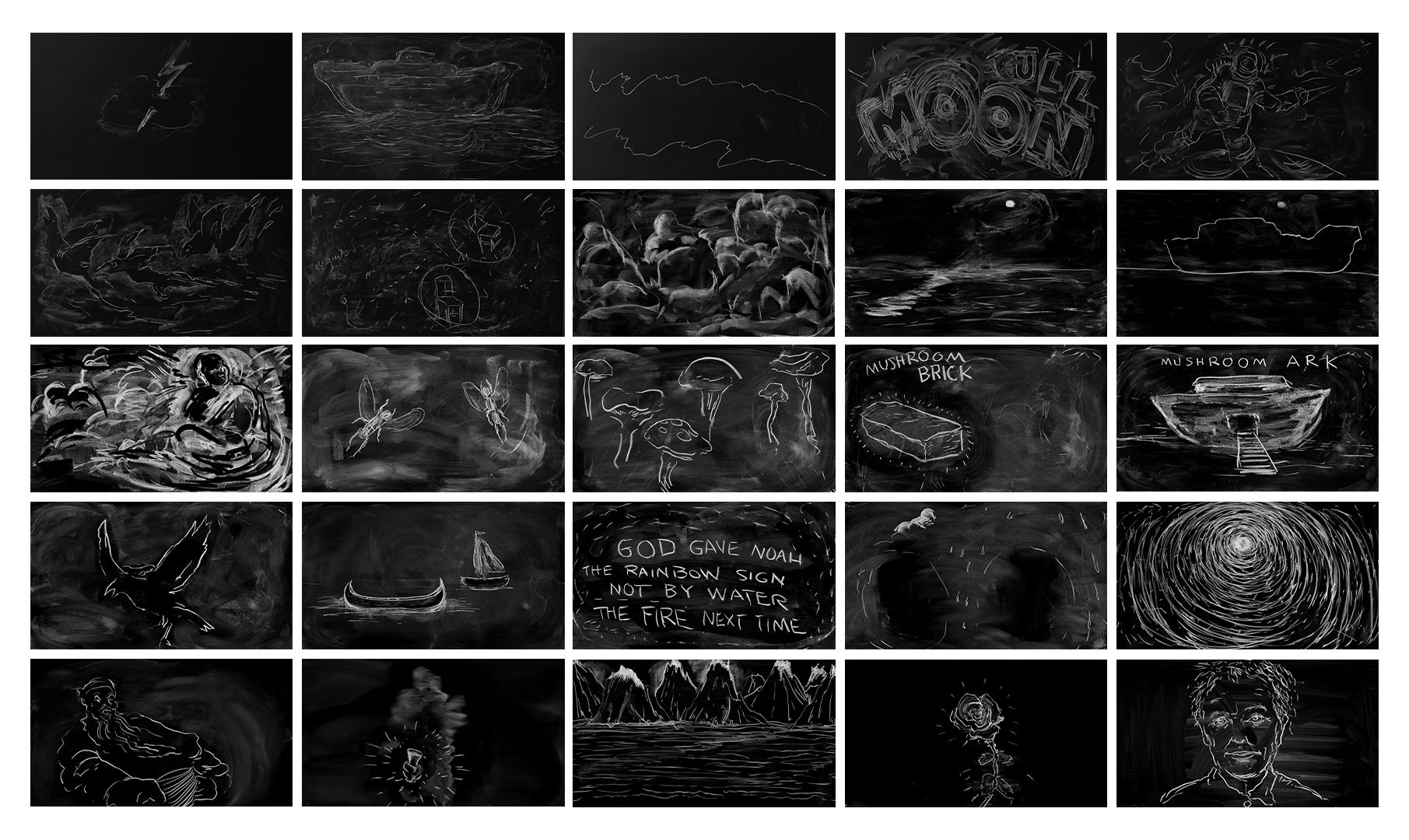Laurie Anderson: A Fantasy Notebook for Freedom
Written by Vittoria de Franchis

“As a child, I was a kind of a sky worshipper. This was the Midwest and the sky was so vast. It was most of the world. I knew I had come from there. And that someday, I would go back.” (Heart of a Dog, 2015) Is Laurie Anderson an alien? Or a “strange form of life”, as Pitchfork suggested in 1982 when reviewing her debut album “Big Science”? Laurie Anderson’s relentless contributions over the past four decades have often been reminders that our imagination makes us all aliens. Through fantasy, we can expand the sense of what is possible. “Speak my language” (Speak My Language, 1994). A call from the underwater inviting the brainy Ulysses to put aside his goal and intuitively plunge into the unknown. “I’m lost in your words. I’m swimming.” (Freefall, 1994).
Laurie Anderson can hardly be labelled; she is a total artist, a spatial innovator. Operating from New York since the late Sixties, her practice suggests a diversity that should be maintained unrestricted, something translatable through an onomatopoeia, a free-spirited idiom, “Yodellayheeh” (Big Science, 1982). Laurie Anderson’s work is rarely frontal, rather multi-sensorial and four-dimensional, be it a standing performance with an ‘augmented’ violin that ends when the ice blocks holding her melt (Duets on Ice, 1974-5), a Virtual Reality piece that brings us to the moon (To The Moon, Laurie Anderson and Hsin-Chien Huang, 2018), a Grammy-awarded album recounting the experienced catastrophe and magic of a destructive hurricane (Landfall, with Kronos Quartet, 2018), or a room whose surfaces are so full of stories and images we can lose ourselves in it (Laurie Anderson: The Weather, Hirshhorn Museum, 2021).
Laurie Anderson’s proposal for CIRCA 20:23, “Notebook”, consists of 25 animations composed of 135 drawings from her notebook. When I ask her what they are about, she answers: “I prefer not to turn them into language or explicate. The world is already overexplained. Think of them outside of context. Thought balloons. Appearing out of nowhere. ” It is no coincidence that Anderson’s piece inaugurates on April’s full moon day. Raising our gaze to look at the sky has become an archaeological gesture, something we romantically associate with menhirs and ancient discoveries. Cities don’t have a sky; the lights are too bright, and pollution veils the firmament. We sometimes have the sensation that nothing is beyond skyscrapers, dangerously becoming condensed cores of our destinies. How relieving is it to look at the night vault and remember there are things we still don’t know and that are beyond our control? Open views and wide horizons are the habitats of our fantasies. There, thoughts can wander as they please. Our species has transitioned from looking at the stars, seeking answers and orientation, to star-ing at our phones, seeking answers and orientation. Yet, “What is behind that curtain?” Laurie Anderson smoothly inquires in “Born, Never Asked” (Big Science, 1982). In an age of overwhelming control, oppression, and censorship, could fantasy be one of the last ramparts of freedom?

In the book “Technic and Magic: The Reconstruction of Reality” (2018), the contemporary philosopher Federico Campagna describes the mental shift from the flat earth conception to the acknowledgement of a spherical planet. The former vision is intrinsically tied to the unknown, a mysterious limitless sea. Beyond the horizon, there could be an Eden, gurgling magma, monsters devouring boats in a mouthful, a pantheon of gods. The more we know, the more we aim at possessing our presence in this world, and the more we are caged in it. One day, the earth becomes round; we can look at it from a distance: as small as a tennis ball that fits in our pockets, it becomes ours. The dogmatism of empirical evidence replaces mystical resilience. Mystery is a void space encompassing all possibilities. It triggers our curiosity and makes us feel alive. When kids are bored, they will start imagining they are somewhere else, in a cave or on a secret island. Voids in space and time, which we seem eager to fill and escape, are the guardians of our utopias. “I think utopia for me is […] that strength in each of us to approach, have an intuition, touch, grasp the inextricability of the world.” says Edouard Glissant in an interview with Hans Ulrich Obrist (Archipelago Conversations, isolarii, 2021).
“People using their imaginations in the freest way possible makes me feel hopeful.” She answers my question: “What is hope?” “Notebook” appears in the swarming Piccadilly Circus in London as a window from which one can see anything they would like to see. “I’d like to give people the freedom to see things for no reason.” Characters and landscapes materialize from chalk on a black page. Some elements speak, others observe, and others suggest, but nothing is explicit. The compositions are not trying to impose an idea but instead offer a chance to fly far away from the pending doom we are told about daily. “Imagination will often carry us to worlds that never were. But without it we go nowhere.” Suggests planetary scientist Carl Sagan.

“The best compliments I get, the things I appreciate the most, are when people come up and say: ‘I’ve gotten so many ideas from your work’ and then they tell me what those ideas are, and they have nothing to do with my work! Nothing! And that, to me, is really great. It means that person is taking something completely different from what I meant. To me that’s a successful exchange.” Says Laurie Anderson in an interview on the Ear Magazine (Volume 13, Number 6, September 1988). For Anderson, the point of making a work of art is a co-creation with the other, a joint act of fantasy. In a recent series of the Serpentine Gallery titled “REWORLDING: Reimagining.”(2023), curator Kostas Stasinopoulos talks about imagination in contemporary times, summoning the “power amassed in the act of imagining together” as the ultimate radical act. I have a precious memory of Laurie Anderson when in 2019, she opened her performance, “The Language of the Future”, at the music festival Terraforma in Italy, asking all participants to scream with her. A collective prayer for all voices to be heard. Screams are amongst those linguistic expressions confined to craziness and not being a “normal human”. They don’t fit our tweets, yet are a vocality liberated from having to mean something. “I’m an artist because I want to be free.”
“Notebook” is a gift of freedom that can be activated through fantasy. Laurie Anderson is the captain of a plane about to crash, pierce the floor of our ideologies and enter another dimension where everything is possible. “Good evening. This is your captain. […] You know I’ve got a funny feeling I’ve seen this before. Why? Because I’m a caveman. Why? Because, I’ve got eyes in the back of my head.” (From the Air, 1982). Each one of the 25 videos is a threshold for catharsis. They take us away from the burden of being omniscient narrators, making room for that enchantment we had as kids when looking at the starry vault and wondering if we, as Laurie, come from the sky.
Vittoria de Franchis is a curator, voice artist and writer. Her practice is developed at the intersection of music, contemporary art and language, with a particular interest in creating performative and imaginative open-source spaces. Among her projects are: Nuova Atlantide (2020), a residential workshop having at its core movement, language and landscape with an emphasis on the dimension of fantasy and mythopoiesis; AVANTGARDENING (2020), an online multidisciplinary platform and festival supporting victims of COVID-19; Una Cosa Mostruosa (2021), a site-specific sonic, visual and research project for the Sacro Bosco in Bomarzo on the cusp between Renaissance Hermeticism and Digital Ecology; gggglllloooossssaaaa (2023), a widespread series of interdisciplinary happenings, or “onomatopoeic fantasies”, featuring artists, collectives, curators and platforms active in the city it takes place into. Since 2016 she has collaborated with Terraforma and Threes Productions. Her writings have been featured in Flash Art, Kaput Magazine, Resident Advisor, Spike Art Magazine, Terraforma Journal, and Zweikommasieben.